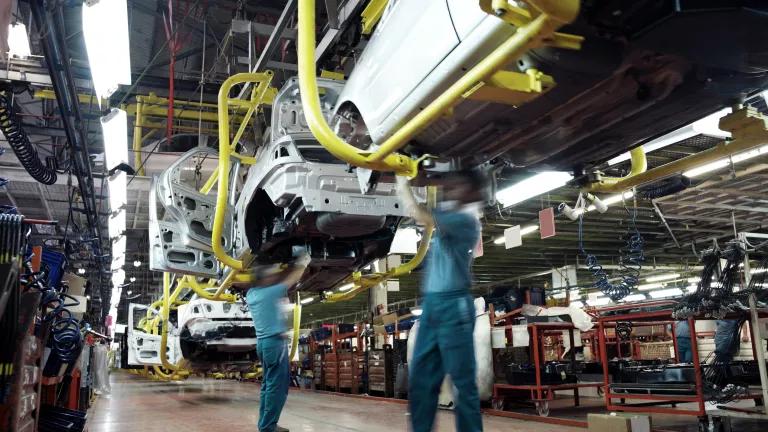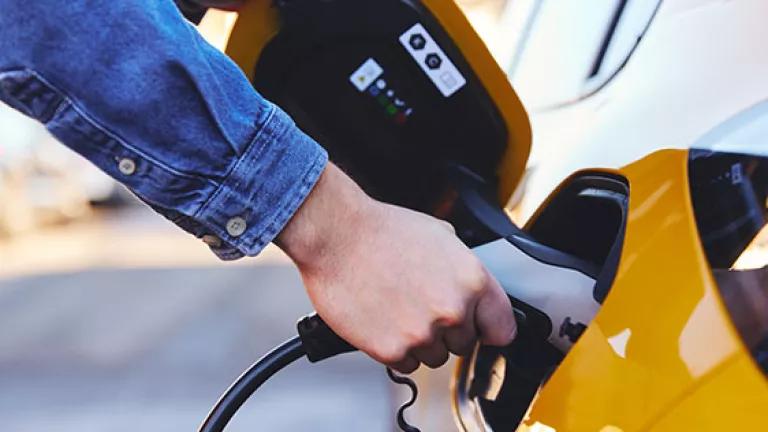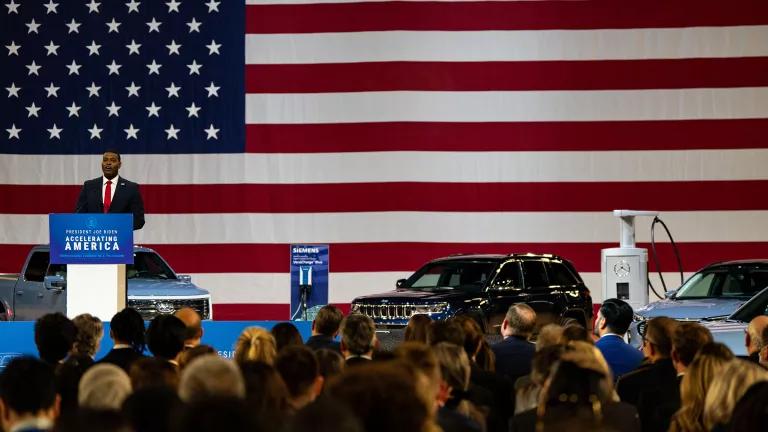Shifting to Cleaner Gas Engines Can Help Reduce Emissions
Automakers transitioning their most popular vehicle models from the dirtiest trims to the cleanest trims can help reduce overall fleet emissions.

The Environmental Protection Agency (EPA) has proposed strong standards to help clean-up the United States transportation system by reducing climate pollution and other harmful air pollution from cars and light-trucks.
The EPA is giving automakers the flexibility to determine the vehicle technologies they will use to comply with the agency’s emissions standards, but EPA is anticipating that automakers will choose to comply through increasing the number of zero-emission vehicles (like electric vehicles) in their fleets.
While increasing sales of zero-emission vehicles is a likely method of compliance, an automaker could also reduce their fleet carbon pollution by favoring sales of their cleaner trims of internal combustion engine models over the dirtier versions of the same models. For example, Ram could focus the sales of their popular pickup trucks on its cleaner 3.6-liter engine trim over the 5.7- and 6.2-liter versions.
An automaker could improve the emissions performance of its vehicles simply by shifting sales within a vehicle model to versions with cleaner powertrains. This shift could achieve emissions reductions without an investment in new emissions technologies or large-scale capital expenditures for factory retooling. Similar emissions improvements could also be achieved due to a consolidation or reduction in internal combustion engine powertrain options as electric vehicles replace sales of these combustion engine models.
Significant Emissions Reductions Can Occur from a Shift Towards the Cleanest Powertrains
To figure out how impactful a shift to the most efficient trims could be, we commissioned Alan Baum and Associates to look at the 12 best-selling gasoline vehicles in the United States in 2022.
In 2022, 8.6 million sales, more than half of all new automotive sales, were from just twelve combustion engine vehicle models. These top-selling vehicles were sold by five automakers: Ford, General Motors, Honda, Stellantis, and Toyota. Within each model, the automakers provided different powertrain options (such as engine size, transmission gearing, hybridization, and other characteristics), and each had their own emissions performance, some better than others.
We estimated the emissions savings (in grams of CO2 per mile) that could be achieved by shifting production in a model from the mix of powertrains sold in 2022 to the cleanest powertrain currently available in that model. The table below shows the top-selling twelve vehicle models we analyzed and the emissions reductions that could be achieved by shifting to the most efficient trim of those models.
| Automaker | Top-Selling Models | Fraction of Automaker's Sales | Emission Savings with Shift to Cleanest Models (gCO2/mi) | % Improvement from 2022 Automaker Fleet Average |
| Ford | F-150, Explorer | 47% | 39 | 13% |
| General Motors | Silverado, Sierra, Equinox | 43% | 19 | 6% |
| Honda | CRV | 25% | 32 | 14% |
| Stellantis | Ram pickup, Jeep Cherokee | 44% | 65 | 21% |
| Toyota | RAV4, Camry, Highlander, Tacoma | 51% | 42 | 17% |
The high-volume models analyzed comprise from 25% to 51% of the automakers’ total sales in 2022. Adjusting sales within these nameplates toward the versions with the cleanest powertrains provides significant emissions reductions.
Next Steps & How You Can Help
While it is vitally important for automakers to transition to zero-emission vehicles to improve air quality and health, reduce climate pollution, and save drivers money at the pump, we know that combustion engine vehicles will continue to be on our roads until this clean transportation transition is complete. Accordingly, supporting the cleanest versions of the most popular vehicles in the United States remains another impactful and necessary strategy that automakers should employ to comply with EPA’s emissions standards.
Fortunately, the Biden Administration is taking a whole-of-government approach to address transportation sector emissions, and soon the National Highway Traffic Safety Administration (NHTSA) – a division of the U.S. Department of Transportation (DOT) – will soon propose new federal Corporate Average Fuel Economy (CAFE) standards. These standards will apply to new cars sold in the United States starting in car model year 2027 and will require fuel economy improvements for vehicles.
NHTSA and DOT will be seeking comment on their CAFE proposal over the next few months. NRDC will work with other public-interest groups and stakeholders to provide feedback on the agency’s proposal and push the agency to finalize the strongest possible fuel economy standard to ensure the cars on the road continue to get cleaner and cleaner. But every voice counts—you too can help by telling NHTSA and DOT to adopt the strongest rule.






